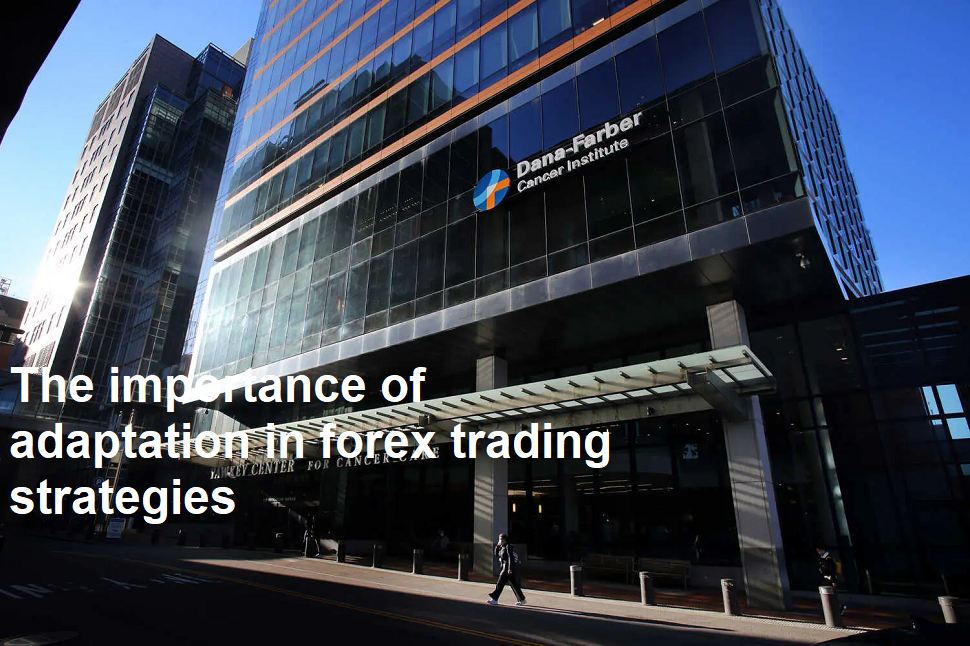Introduction: Explains the importance of adaptation in forex trading strategies
In the world of forex trading, adaptation is an important key to surviving and generating profits in a market full of uncertainty. Forex market volatility is often the main topic in every financial analysis because it can provide high profit opportunities as well as large risks. Introduction to the dynamics of exchange rate fluctuations is very important for traders to formulate effective strategies. An adaptive and flexible trading strategy is an approach to trading that prioritizes the ability to quickly adapt to changing market conditions. In contrast to static strategies that stick to one plan without considering market changes, adaptive strategies respond to market dynamics by adjusting trading tactics, such as changing entry and exit points, adjusting stop losses, and changing trading instruments if necessary.
The main goal of implementing an adaptive strategy is to maximize profit potential and minimize the risk of loss amidst high volatility. In this context, traders are expected to be able to respond quickly and accurately to market signals, price trends and macroeconomic indicators that influence exchange rates. This strategy prioritizes flexibility and does not stick to one standard method. Adopting an adaptive trading approach requires a deep understanding of the market and the various factors that influence it, coupled with high discipline in implementing risk management. In this way, a trader can increase his chances of success in the long term even though he has to deal with forex market conditions that are often unpredictable.
Market Analysis: Understanding and Interpreting Market Signals
To understand and interpret market signals effectively, especially in the forex market which is known for its volatility, analysts and traders must be able to identify volatility indicators. This indicator helps measure rapid price changes over a certain period of time. Examples include Average True Range (ATR), Bollinger Bands, and Volatility Index (VIX). ATR provides an idea of the average daily price movement, Bollinger Bands show the upper and lower limits of price fluctuations, while VIX measures the expected market volatility. In volatile market conditions, technical and fundamental analysis can complement each other. Technical analysis techniques such as chart patterns, Fibonacci retracement, and oscillators such as RSI or MACD can be used to read trends and turning points on price charts. On the other hand, fundamental analysis which includes inflation expectations, monetary policy from central banks, and significant economic events also have a big influence on market movements. Traders must be clever at combining this information to gain a holistic view.
Patience is an important quality when dealing with the forex market. Traders must wait for confirmation of the signals provided by indicators or news before opening or closing a trading position. A decent trader will know that not all signals are of equal quality and that waiting for the right market conditions is part of a disciplined trading strategy. Discipline in implementing trading strategies is the key to long-term success in the forex market. This includes the use of strict risk management such as limiting the amount of loss per trade as well as understanding when to exit the market when signals are no longer valid. By maintaining this approach consistently, traders can minimize losses while maximizing opportunities for profits even amidst high volatility in the forex market.
Trading Strategy Formulation: Developing an Adaptive Trading System
Trading in financial markets can be highly volatile and requires rapid adaptation to changing conditions. The first step in designing an adaptive trading strategy is analyzing historical data to recognize market patterns, which can then be used as a basis for formulating a trading system. This involves using technical analysis tools such as moving averages, RSI, and MACD to determine trends and entry or exit points. Additionally, it is also important to understand fundamental factors that may influence the market, such as economic events or announcements from central banks. In order to protect investments from sudden market volatility, the use of dynamic stop-loss and take-profit is highly recommended. A properly set stop-loss can help traders exit a position with minimal losses if the market moves against them. Meanwhile, the take-profit setting will guarantee a profit if the price target is reached. The main key to both is flexibility, these two orders must be adjusted dynamically based on market conditions and volatility that occurs. This allows traders to reduce risk while still having the potential to secure profits.
Diversification is another foundation of a successful trading strategy. By spreading investments across various financial instruments, traders can reduce the risk of loss if one investment is unsuccessful. This approach creates a balanced portfolio where assets can still grow even though some sectors are underperforming. Diversification can include various asset classes such as stocks, bonds, commodities, even cryptocurrencies, with the aim of increasing overall profitability and minimizing the negative impact of market changes on a single asset. Finally, backtesting a trading strategy before implementing it is an essential step. This allows traders to see how their strategy will work based on historical data without any real risk. Once the strategy seems solid in theory, start with a small trading size or demo account to further test its effectiveness in current market conditions. Developing an adaptive trading system is an iterative process where developing an adaptive trading system is an iterative process where the strategy created is continuously calibrated to perfect it. It is important to monitor performance and make adjustments as needed, based on real market feedback. A strategy that is flexible and can evolve with market dynamics is the key to achieving long-term success in trading. In this way, traders can continue to learn from previous experiences and apply this knowledge to improve their trading systems on an ongoing basis.
Implementation and Evaluation: Implementing and Adjusting Strategies According to Market Conditions
To implement an adaptive trading strategy in daily trading activities, you first need to define indicators that are dynamic and can adapt to various market conditions. This can include the use of different moving averages in trending and ranging market conditions, or RSI levels adjusted to represent overbought and oversold in different market contexts. Additionally, it is important to use an automated or semi-automated trading system to ensure your strategy is executed unimpeded by human emotions.
Developing a proactive risk management plan is important in dealing with a frequently changing market. This includes setting stop-loss wisely, which is not only based on the maximum amount of money you are willing to risk, but also on important technical points of the price chart such as support and resistance. The use of portfolio diversification is also crucial, by having assets in various instruments, you can reduce potential losses when one market moves against you. Leverage must also be used carefully—leverage can increase profits but also losses.
It is important to carry out periodic analysis of your trading performance to identify what is working and what is not. This review should include an assessment of return on investment (ROI), drawdowns, as well as the success ratio of individual deals. Make sure to note the market conditions when the deal was opened and closed, so you can learn which strategies are effective in certain market conditions. By carrying out these periodic reviews, you can make adjustments to your trading strategy to improve future performance.
Evaluating the results of previous trades allows traders to adjust their tactics and approach to be more effective. For example, if the market has become more volatile, adjustments to your stop-loss and take-profit levels may be necessary. Or if a strategy is no longer producing consistently positive results due to changes in market conditions, it may indicate the need for an overhaul of the strategy. Being honest with yourself about the effectiveness of your approach is the key to continued evolution in trading. Always be ready to learn from mistakes and adjust your plans according to the results obtained. This way, you will not only survive, but also thrive in this dynamic market.












